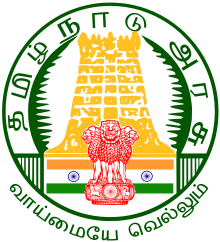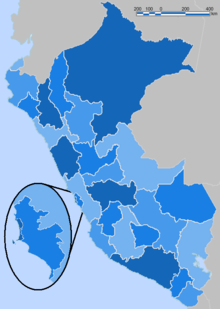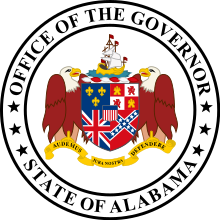
Back Portal:Politik ALS بوابة:السياسة Arabic بوابة:سياسة ARZ Портал:Политика Bulgarian প্রবেশদ্বার:রাজনীতি Bengali/Bangla Portal:Politika BS دەروازە:سیاسەت CKB Portál:Politika Czech Portal:Politik German Portal:Siyaset DIQ
| Main | Topics and categories | Tasks and projects |
The Politics portal
Politics (from Ancient Greek πολιτικά (politiká) 'affairs of the cities') is the set of activities that are associated with making decisions in groups, or other forms of power relations among individuals, such as the distribution of resources or status. The branch of social science that studies politics and government is referred to as political science.
It may be used positively in the context of a "political solution" which is compromising and non-violent, or descriptively as "the art or science of government", but also often carries a negative connotation. The concept has been defined in various ways, and different approaches have fundamentally differing views on whether it should be used extensively or in a limited way, empirically or normatively, and on whether conflict or co-operation is more essential to it.
A variety of methods are deployed in politics, which include promoting one's own political views among people, negotiation with other political subjects, making laws, and exercising internal and external force, including warfare against adversaries. Politics is exercised on a wide range of social levels, from clans and tribes of traditional societies, through modern local governments, companies and institutions up to sovereign states, to the international level.
In modern nation states, people often form political parties to represent their ideas. Members of a party often agree to take the same position on many issues and agree to support the same changes to law and the same leaders. An election is usually a competition between different parties.
A political system is a framework which defines acceptable political methods within a society. The history of political thought can be traced back to early antiquity, with seminal works such as Plato's Republic, Aristotle's Politics, Confucius's political manuscripts and Chanakya's Arthashastra. (Full article...)
Selected article
The Liberal Movement was a minor South Australian political party in the 1970s. Stemming from discontent within the ranks of the Liberal and Country League, it was organised in 1972 by former premier Steele Hall as an internal group in response to a perceived resistance to sought reform within its parent. A year later, when tensions heightened between the LCL's conservative wing and the LM, it was established in its own right as a progressive liberal party. When still part of the league, it had eleven parliamentarians; on its own, it was reduced to three. In the federal election of 1974, it succeeded in having Hall elected to the Australian Senate with a primary vote of 10 per cent in South Australia. It built upon this in the 1975 state election, gaining almost a fifth of the total vote and an additional member. However, the non-Labor parties narrowly failed to dislodge the incumbent Dunstan Labor government. That result, together with internal weaknesses, led in 1976 to the LM's being re-absorbed into the LCL, which by then had become the South Australian division of the Liberal Party of Australia. The LM and its successor parties gave voice to what is termed "small-l liberalism" in Australia.
Featured picture

A campaign poster from the National Union Party during the US election of 1864, showing presidential candidate Abraham Lincoln (left) and his running-mate Andrew Johnson. The Republican Party changed its name and selected Johnson, a former Democrat, to draw support from War Democrats during the Civil War.
The table below ranks all United States Supreme Court justices by time in office. For five individuals confirmed for associate justice, and who later served as chief justice—Charles Evans Hughes, William Rehnquist, John Rutledge, Harlan F. Stone, and Edward Douglass White—their cumulative length of service on the court is measured. The basis of the ranking is the difference between dates; if counted by number of calendar days all the figures would be one greater, with the exception of Charles Evans Hughes and John Rutledge, who would receive two days, as each served on the court twice (their service as associate justice and as chief justice was separated by a period of years off the court). The start date given for each justice is the day they took the prescribed oath of office, with the end date being the date of the justice's death, resignation, or retirement. A highlighted row indicates a justice currently serving on the court. (Full article...)
The United States secretary of energy is the head of the United States Department of Energy, a member of the Cabinet of the United States, and fifteenth in the presidential line of succession. The position was created on October 1, 1977, when President Jimmy Carter signed the Department of Energy Organization Act, establishing the department. The energy secretary and the department originally focused on energy production and regulation. The emphasis soon shifted to developing technology for better and more efficient energy sources, as well as energy education. After the end of the Cold War, the department's attention also turned toward radioactive waste disposal and the maintenance of environmental quality. Former secretary of defense James Schlesinger served as the first secretary of energy. As a Republican nominated to the post by Democratic president Jimmy Carter, Schlesinger's appointment marks the only time a president has chosen a member of another political party for the position. Schlesinger is also the only secretary to be dismissed from the post. Hazel O'Leary, Bill Clinton's first secretary of energy, was the first female and first African American to hold the position. The first Hispanic to serve as Energy Secretary was Clinton's second energy secretary, Federico Peña. Spencer Abraham became the first Arab American to hold the position on January 20, 2001, serving under the administration of George W. Bush. Steven Chu became the first Asian American to hold the position on January 20, 2009, serving under president Barack Obama. Chu was also the longest-serving secretary of energy and the first individual to join the Cabinet after having received a Nobel Prize.
President Joe Biden's nominee to be Secretary of Energy, former Michigan governor Jennifer Granholm, was confirmed on February 25, 2021. Granholm is the second woman to lead the Department of Energy. (Full article...)
Selected quote
Selected biography
Cleopatra VII Thea Philopator (Koinē Greek: Κλεοπάτρα Θεά Φιλοπάτωρ lit. Cleopatra "father-loving goddess"; 70/69 BC – 10 August 30 BC) was Queen of the Ptolemaic Kingdom of Egypt from 51 to 30 BC, and its last active ruler. A member of the Ptolemaic dynasty, she was a descendant of its founder Ptolemy I Soter, a Macedonian Greek general and companion of Alexander the Great. After the death of Cleopatra, Egypt became a province of the Roman Empire, marking the end of the last Hellenistic-period state in the Mediterranean and of the age that had lasted since the reign of Alexander (336–323 BC). Her first language was Koine Greek, and she was the only known Ptolemaic ruler to learn the Egyptian language.
Did you know (auto-generated) -

- ... that Dave Barrow quit municipal politics to work at his family's insurance brokerage before becoming mayor of Richmond Hill?
- ... that Western media treated Egyptian activist Gihan Ibrahim as a face of the Egyptian revolution of 2011, but rarely mentioned her revolutionary-socialist political views?
- ... that following the Russian invasion of Ukraine, a diverse group of exiled Russian public figures formed the Anti-War Committee of Russia to unite different political movements to oppose the war?
- ... that Iraqi poet Kazim al-Samawi spent more than half his life in political exile and was called "The Sheikh of the Exiles"?
- ... that Nobel laureate Thomas Mann reportedly did not want his Reflections of a Nonpolitical Man to be translated into English during his lifetime due to its chauvinistic content?
- ... that before entering politics, Romina Pérez worked at the Center for Legal Studies and Social Research, which "became a 'nursery' for intellectual and political cadres of the Movement for Socialism"?
More did you know...
- ...that the Communist League of America was formed after some members of the Communist Party USA were expelled for Trotskyism?
- ...that the National Assembly of Azerbaijan was the first secular republican parliament in the Muslim world?
- ...that in world-system theory, sociologists debate whether two world-systems have ever existed during the same period?
- ...that former Republican California State Senator Becky Morgan served on the Board of Trustees of both her alma maters, Stanford University and Cornell University?
- ...that Chinese Taipei is the designated name the Republic of China (Taiwan) uses in most international organizations?
- ...that the Second Malaysia Plan sought to restructure the socioeconomic state of Malaysia through aggressive affirmative action?
In this month
- May 5, 2005 – A General Election in the United Kingdom sees Tony Blair's Labour government returned to office with a reduced majority of 66.
- May 14, 1948 – The Declaration of Independence of Israel is made.
- May 18, 1948 – The first Legislative Yuan of the Republic of China officially convenes in Nanking.
News and Current events
- August 11: 4 local government areas in New South Wales, Australia locked down after COVID-19 case
- August 11: Australia: AstraZeneca vaccine access expanded by Victorian government
- August 1: Australia: Victorian lockdown lifted
- July 29: Tunisia's president dismisses prime minister, suspends parliament
- July 25: Australia: Wikinews interviews Reg Kidd, mayor of the City of Orange, about COVID-19 lockdown and local government
- July 23: South Australia enters week-long lockdown to contain COVID-19 Delta variant spread
- July 21: Technological University Dublin senior lecturer Dr Lorcan Sirr speaks to Wikinews on housing market in Ireland
- July 21: Three rural councils in New South Wales, Australia enter 7-day lockdown
- July 21: Australia: Victoria lockdown extended by a week with 85 active cases recorded
- July 15: California governor signs new state budget, eligible Californians to get stimulus payments
Topics and categories
General images
Related portals
Associated Wikimedia
The following Wikimedia Foundation sister projects provide more on this subject:
-
Commons
Free media repository -
Wikibooks
Free textbooks and manuals -
Wikidata
Free knowledge base -
Wikinews
Free-content news -
Wikiquote
Collection of quotations -
Wikisource
Free-content library -
Wikiversity
Free learning tools -
Wiktionary
Dictionary and thesaurus
Sources
More portals
© MMXXIII Rich X Search. We shall prevail. All rights reserved. Rich X Search























































